AssemblyAI's Dylan Fox on building an AI company during a period of radical change
In 2015 Dylan Fox was a machine learning engineer at Cisco. Amazon Alexa had just launched earlier that year, and it was taking the world by storm, creating a significant demand for companies to add voice controls to their products; Cisco was one such company.
That meant Dylan had to get familiar with the various voice recognition software solutions in the market. Much to his frustration, they all had poor developer experiences. He knew there was an opportunity for advanced speech technology. Soon after that, AssemblyAI was born.
“People didn’t believe it was possible. What they missed was that the technology was turning over. The incumbents at the time built their companies up on old tech, then stopped innovating. That left them ripe for disruption.” – Dylan Fox
Today, enterprises like WSJ, NBC Universal, and Spotify use AssemblyAI’s API to access state-of-the-art AI models to transcribe and understand speech and build AI-powered features faster. In this episode of “Spotlight On: AI,” Dylan discusses the profound changes to both his product, and the AI landscape, over the past eight years, gives insight into where he thinks AI is going as a category, and offers advice on how founders should approach problem identification, customer interaction and more. Highlights:
- 00:00 - Intro
- 06:15 - AssemblyAI's origin story and Dylan's journey as a solo founder; being accepted to YCombinator after the deadline
- 08:10 - Advice for founders around hiring and early product improvements
- 19:26 - Advice for founders during the AI development process
- 29:40 - The radical change that has happened across the AI landscape since AssemblyAI started, from Amazon Alexa to the explosion of Generative AI
- 27:34 - Best practices for cutting through the noise as an AI-native company
- 35:45 - Predictions about the future of AI
Explore more episodes from the season:
- Episode 02: Roblox’s Daniel Sturman on Building Great Teams in the AI Era
- Episode 03: Ada’s Mike Murchison on how AI is revolutionizing customer service
- Episode 04: Merge’s Shensi Ding on powering the next generation of AI SaaS companies
- Episode 05: Scale AI’s Alexandr Wang on the most powerful technological advancement of our time
- Episode 06: Bard’s Jack Krawczyk on the birth of Google’s AI chatbot and the creative potential that lies ahead
- Episode 07: Synthesia’s Victor Riparbelli on creating an environment to harness AI benefits and reduce harms
- Episode 08: Ironcald's Cai GoGwilt on a decade of anticipating the transformative power of AI
- Episode 09: Checkr’s Daniel Yanisse on tackling bias in people and AI
- Episode 10: Cinder’s Glen Wise on trust and safety threats and holding AI accountable
- Episode 11: Transcend’s Kate Parker on putting data back into the hands of users in an AI-driven world
- Episode 12: Arm’s Rene Haas on building the brain of artificial intelligence
Sara (00:00):
Welcome to Spotlight On a new series produced by Accel, where we examine the technology shaping our world through conversations with the people building it.
Steve (00:11):
Hello everyone and welcome to Spotlight On. I'm Steve Loughlin, a Partner at Accel, and we're here with Dylan Fox and Sarah Ittelson, Partner at Accel as well.
Sara (00:22):
Thanks, Steve. I'm Sarah Ittelson, and Steve and I are thrilled to be here with Dylan Fox, the CEO and founder of AssemblyAI.
Dylan (00:29):
Yeah, thanks for having me here. I'm excited to chat with you guys.
Sara (00:33):
So before we dive into it, let's give our listeners a little context. You started AssemblyAI in 2017.
Dylan:
Yeah
Sara:
Steve and I got involved in 2022 after leading the A and joining your board.
Dylan:
Yep
Sara:
And man, it's been quite a ride as AI has come into the forefront, so we've got a lot to cover today.
Dylan (00:52):
Yeah, I feel like more has happened in that period of time since I met you guys and you invested in the company compared to the beginning four years where wewere trying to just figure it out, so it's been a crazy last two years.
Steve (01:05):
Maybe that's a good place to start. Can you talk a little bit about running your company almost in the dark when no one was talking about AI and then how things shifted for you, in that moment?
Dylan’s background & early days
Dylan (01:16):
Yeah, definitely. I took a job at Cisco in San Francisco and fortunately I did where I met my wife, and now we have two kids. So I took that job and started learning about neural networks and deep learning and just saw, this is like 2015 now, that that was totally the future for where the technology was going. A lot of different domains were starting to be disrupted by deep learning approaches. So where you would have classical machine learning models that had kind of plateaued from an accuracy perspective, these deep learning-based approaches, which really met these larger neural networks that were being trained for those tasks, started to show that in some cases they were at parity with these classical machine learning approaches in some cases were outperforming. And even if they were at parity, you could just tell like, okay, we have barely scratched the surface, it's at parity with the old way of doing things, this is absolutely the future. And so the team that I was on at Cisco, we were looking into different machine learning products that we were going to build for the company and I just got deeper and deeper into neural networks and deep learning. So I don't want to take the question too off tangent, but that's really where I got started with my journey into AI.
Steve (02:45):
And then you started the company and when you started it, what sort of reception did you have from the market and how did you maintain or build your conviction at the beginning?
Dylan (02:56):
People thought I was crazy when I started the company back then.
Steve (03:00):
Sounds like a classic entrepreneur journey.
Dylan (03:02):
People still think we’re crazy. Fortunately, we've met people along the way who don't think that, like you guys.
Steve (03:08):
Or that appreciate crazy.
Dylan (03:09):
Yeah, exactly.
Steve (03:11):
Seeking crazy, I would say.
Dylan (03:13):
I remember being in YC, we eventually got into Y Combinator and I was at some networking event and someone was like, how many people are you at the company? And I was like, it's just me right now. And they were like this other company that's working on it, they have thousands of employees, how are you going to do this thing? And so people just didn't believe that it was possible. But I think that what people missed was that the technology was turning over, and so the incumbents at the time had really built up their companies on old tech and then stopped innovating. That left them right for disruption because new technology was about to be built that was going to be dramatically better, and that was really the intuition.
Steve (03:53):
So classic Innovator's Dilemma, in the sense.
Dylan (03:54):
I have not read the book yet, but I got the recommendation online and I need to read it. But yeah, so at Cisco, I mean really the intuition was we were building these natural language understanding products and it was like this R&D team that I was on and we went out and looked to buy speech recognition software because, I don't exactly remember the date, but Amazon Alexa had just launched and was kind of taking the world by storm. It was such a cool product and there was this interest by a lot of companies to build voice-powered interfaces into products. And so we were looking at that, at my job, and through that process we looked at a bunch of different companies that were selling speech recognition technology and it was just like as a developer, a terrible experience.
(04:47):
One sent me a CD ROM to try, you had to talk to an army of salespeople just to get access to some sort of API documentation. A lot of vendors didn't even have an API. And then when you did get access, the developer experience was just terrible. And I had been used to the Twilio or Stripe-style developer experience. So really the idea was okay, that experience was, the convergence of ideas was like that experience was terrible looking for an option. And I saw that the tech was going through this transformation and going to be a lot better. And so the ideas merged and the idea behind the company was what if you can build new speech recognition technology, leveraging the latest deep learning AI models and then build an incredible developer experience and community around that and developer product around that just to enable the proliferation of the technology, get it into the hands of any type of organization, whether you're a big company or just a developer. And that's where we started.
Steve (05:56):
We as in you?
Dylan (05:57):
Yeah, me at the time. I quit my job to work on it because I was super bored at my job.
Steve (06:05):
You got into Y Combinator as a solo founder.
Dylan (06:08):
Yeah. So, I was really bored at my job. I had started a company prior, in college, and so I knew I liked the adrenaline of startups and I felt like, okay, I did my rest at a corporate job and now I need more adrenaline in my life. So I quit my job and I started working on Assembly and the YC deadline had passed, it was like 30 days past the deadline, but I wanted to try to just get my thoughts on paper for what I was trying to build. And so I filled out the application and I recorded the video and I submitted it and I just forgot about it because it was like 30 days past due, solo founder, I have zero progress, there's no way I'm getting in. And I just started dating my now wife who's from Denmark. And so I submitted the application and then I went to Denmark with her.
(06:56):
I was like, I'm just going to work on it from there and by myself. And then I got an email like, “Hey, we'd like to invite you to an interview.” And I was in this remote town in Denmark. So I showed my wife the email and I was like, I’ve got to go back to San Francisco. So I booked a flight the next day I flew back to San Francisco, I drove down to the YC office, my phone lost reception, so I was trying to find the office. I was so worried I was going to be late for the interview because my GPS totally crapped out, luckily made it to the office somehow. And then met this guy, Daniel Gross, who had worked at Apple, totally understood the problem because he looked at speech recognition technology too when he worked at Apple. And he believed in the opportunity and ended up being our YC partner, he’s an investor in the company still, and that's really what kicked off the company.
Steve (07:55):
And then when did you start bringing people on the team?
Dylan (07:59):
It was a lot of learning as a founder because I had worked on a startup before, but it was in college and it wasn't serious. And so the first year it was confusing to figure out who were the first people we needed to hire, what we needed to focus on to actually get customers. And we just were kind of all over the place and then eventually realized, okay, really just got to focus on making the product better. And so started hiring a couple of key hires, like the first engineers that we brought on board. And so the first one or two hires were other machine learning engineers. We just focused on making our models better and API better.
Steve (08:45):
Were you talking to customers at this time?
Dylan (08:46):
The whole time, yeah.
Steve (08:47)
So it was kind of like, so you're showing the model, it's not working, you're figuring out what to fix. Rinse and repeat.
Dylan (08:50):
Exactly.
Steve (08:55):
So you're saying it didn't work right out of the box.
Dylan (08:57):
It was not state-of-the-art, right? It was terrible right out of the box.
Seeing opportunity in the marketplace
Steve (09:02):
But what kept you going then? Was it the gap was closing so you could see, hey, if we get this right, there's huge demand so they keep meeting with us even though it's not working or what was the experience? Because that might be helpful for the other entrepreneurs as they're out doing early customer development.
Dylan (09:20):
I just had such conviction that there was such demand for this technology and the market wanted it to be better. And there were so many things that people wanted to do, but they just couldn't because they didn't have access, the tech wasn't good enough yet, the state of the technology was not good enough yet. And the analogy I always have used in my head is it's very much like self-driving cars. Like you know there are full self-driving cars, there's a huge demand and market for that. And it's not a question, it's just a matter of when the technology hits that certain point. And even today there's still so much confusion and chaos around what the actual level of accuracy for this AI technology is at. I mean, back when I started the company, people were claiming it was human level and that's like six and a half years ago and it's still not human level.
(10:03):
And people still claim that it's human level, the progress has dramatically improved. But back when we started the company, the state of the technology was just not that good and robust. So some of the first models that we trained, they were trained on around 10,000 hours of voice data. And that's compared to the model that we just shipped a couple of weeks ago, trained on over a million hours of voice data. And then the one we're going to release in a couple of weeks is trained on around 10 million hours of voice data. So just the size of models, the size of data, the level of capability of the models that we're training now, I mean it is literally night and day. If you just look at the output from the models five years ago to the models today, I mean it is highly noticeable to a human, the level of improvement in accuracy.
(11:04):
And so part of it was in the early days, it took us a lot of at-bats to get something that was good enough to even sell. But once you got to that point, the market was very small back then because the tech wasn't mature. The tech period, not just our tech, but the tech in the market was just not mature enough yet for there to be widespread adoption. But I would talk to customers, I would talk to startups, and you could just see that there was pent-up demand. And that opportunity really kept me and us going and still does because now we're in this new phase of the market where the technology has improved dramatically. But now in 2023, it's generative AI. So there's all these new AI applications being built, they're trying to leverage voice data to improve sales rep efficiency, to create action items from meetings, to automate podcast content redistribution because now you have a large language model to be able to work with and you want to be able to take your voice data and push it into a large language model. And so that's created a ton of tailwinds behind what we're doing and driven even more demand. So even back then, I think I just had conviction for where this was going and could see that.
Getting to the first investor meeting
Steve (12:34):
So you had that initial traction. I think that's about the time that you probably got the best entree into Accel, which is Sara Itellson who joined us as a Partner. And I think she was, two weeks into being a partner at Accel. And I had Covid and I got sent this thing. And quite frankly, you see a lot of these companies and so we always do our best to keep an open mind about every company, but on paper it was kind of like, oh, another voice-to-text company. And then I told Sara, “Hey, can you take a look at this?” And she was super excited because when you're first starting, every pitch is the most exciting pitch you've ever seen. And so Sarah, do you want to talk a little bit about that? I sent it to you and then you had a meeting.
Sara (13:15):
Yeah, well I vividly remember, yeah, Steve basically saying to me, “Hey, my whole family has Covid”. We were going to take this call together. “You're going to take it yourself, i’ve got to deal with this.” And then we had this amazing first call and you do sort of doubt yourself in your early days on the job where you're like, am I just green or is this really something special?
Steve (13:38):
Even on my side too, when you called me, you said, this is great. And I go, Sara, everything's great when you first get started.
Sara (13:43):
Its all good. Yeah, yeah, exactly. But I thought really deeply about it because I thought, man, Steve, his whole family has Covid right now. He's dealing with a lot. The last thing I want to do is be like, I found this great thing.
Steve (13:57):
The bar was high.
Sara (13:58):
The bar was high, but I really walked away incredibly excited from our first conversation. And so I went back to Steve.
Steve (14:07):
Well, you got to meet him. And then I'm like, okay. So I met with you a day or two later and I called Sara back kind of raspy and was like, this one's really good. Dylan is really good. I think it was a combination of kind of the technology and the problem you're solving, but also we kept going back and forth about what a student of your own business you were. You just knew everything about what you were trying to do beyond the product, who your customers were, what problem you were solving for them, what made you distinct to your competitors. And so we basically said, we need to talk to him more. I think we talked to you every day for six to 10 days or something like that. And every time we get off the phone we're like, we got to find something wrong with this.
Sara (14:50):
There is a time when you're trying to talk yourself out of it because you have to sort of be your own devil's advocate or that's a role that we play for each other. And so we were having these calls, trying to talk each other out of it and then talking each other back into it. But I think to your point, Steve, when we met, what was really clear was it, it was so nascent and yet you really had sort of conviction of, “I've now spent these years getting it ready for prime time and it's now ready.” You were this very small team and you were pretty clear on, now's the time to put the foot on the gas. And so, it may be interesting to talk about what was that turning point where you were like, it's ready now to really get this out into the wild?
Dylan (15:41):
Well, first off, thank you for sharing all that. That's great. Tell me more. That's great. But I do remember getting intro’d to you. You hadn't even publicly changed your LinkedIn profile yet that you took the job.
Sara:
That’s right we hadn’t announced.
Dylan:
I was like, who is this person that I'm about to talk to? I couldn't find any Information.
Sara (16:01):
What a hand off to a stranger.
AI before the hype
Steve (16:03):
Well, the other context too that's worth noting is it was before OpenAI was having its moment and AI companies weren't the flavor of the day. There was a lot of heat around automation, vertical software, and it was in the middle of this runup of IT spend that was pretty intense before all the layoffs that happened in our ecosystem. And so an AI company at that point was non-obvious.
Dylan (16:35):
It wasn't an AI company. I mean the term AI, well, I mean it was an AI company, but the term AI was…
Steve (16:40):
You were called AssemblyAI. You were not a .org.
Dylan (16:45):
That's a great point. But we still talked about ourselves as a deep learning company.
Steve:
That’s fair.
Dylan:
If you used AI back then, people were like, this is probably not legit. You would say machine learning or deep learning.
Steve (17:02):
Intelligent software.
Dylan (17:03):
And then now it's AI and that's mainstream and that's believable now and that carries weight. So the term has kind of shifted, but to your point, I think that I was a user of this technology for years in my job. I remember getting the first Amazon Alexa and was just like my mind was blown by the fact that I could sit across the room and dictate voice commands and they were accurately recognized and the power of that. I loved the technology and so I was a user of it for years before I even started building Assembly. And I worked on it. In addition to being an actual user of it, I was building programs with the technology so that experience plus the first couple of years of just trying to stick the first landing, wandering through the forest.
Steve (18:00):
But you never wavered from the problem.
Dylan:
No, no.
How to truly understand the problem you’re solving
Steve:
think that's an important distinction for entrepreneurs is if you really deeply understand the problem statement you're going after or you were the customer for the problem that you're solving, you can have confidence that you're going in the right direction. Because to your point, if you solve it, there's a big payout at the end. I think sometimes entrepreneurs don't really understand the problem or are trying to meet with customers as a proxy for deeply understanding the problem. And it just doesn't, you don't get there as fast as if you're authentic to the space that you're operating in. The bar is you, you would've been a customer.
Dylan (18:41):
Right. And we're still highly critical of the product we're building. We use it all the time internally. We've got an awesome team of developer educators who are our developer evangelists who are constantly shipping products with it, and they're in Slack, they’re like, “This part sucks, this is a bad experience.” So we've always remained extremely objective around what we're building and have always been constructively critical of what we're building even back then. And so to your question around the switch, I remember we posted something on Hacker News and then this guy from this company in Australia who's the co-founder and CTO , reached out and was like, “Hey, we're using Google's speech API, it's fine, but what you're doing seems really cool and we'd love to kick the tires with it”. And back then it was a waitlist to use our API because it was really bad.
(19:39):
So we needed to control the blast radius. We went back and forth for two or three months iterating on the product until it was good enough for them to buy. And they ended up being a pretty big customer. And actually, they're still a customer and they just renewed with us all these years later for a much bigger contract. And I'm still in touch with the founder there. So it was that land, and then we landed another one that was kind of big like that, and then we landed a couple of smaller customers and we saw a lot of developers signing up. And so we just started to see that, okay, we've kind of crossed this threshold into the space now where we can successfully repeatably go and sell this thing. And so now we just have to figure out, okay, we're at 40% efficiency. You know what I mean?
(20:31):
There's all these things that are broken with how we're going to market the product, our positioning, our website, our brand, but we're able to make some progress and we're able to have customers that are moderately happy and we're able to demonstrate that that's repeatable. And so that started to happen and then 18 months later we raised the Series A with you guys. And so we had crossed the point where we now had more than doubled year over year, and we showed that we had started to build up all this pipeline. We were still really small, really small team. So I think we were like 15 people or something when we met you guys and when you came on board. And then it's just been about maturing and maturing from there. And that's why really when you, going back to the opening, I genuinely feel like the time since we raised our Series A, which was January 2022 to now, significantly more has happened. I mean obviously because companies grow more people, but so much more radical change has happened than in the first chapter of the company. We're really just wandering through the forest trying to find the path up the hill.
Sara (21:47):
Well, you were making the point that at the time AI companies weren't kind of like the topic du jour and actually the key being entrepreneurs who kind of know the problem and know their space. And so much of my recollection of that conversation was really about all the data that sort of trapped in audio and what value you could create if you could extract that data and sort of create a bunch of experiences leveraging it. And it was really a precision around that opportunity that this data needs to be unlocked.
Dylan (22:20):
Yeah, I've never really even liked the term transcription to be honest with you because that almost minimizes the value of what we're doing. And the value is really, I said this to you this morning, it's taking this voice data and turning it into something valuable that might be a command that you say that turns on music, that might be finding issues that are happening in your contact center, in your call center from your customers calling in your customer support reps. That might be automating meeting notes. I mean, we've got hundreds of startups that are building AI note takers with our API and rapidly growing their user base because it's such a valuable product that they're building. Content repurposing apps, internal workflows that are being built leveraging this tech. So it's really about being able to take this voice data that is really locked away because you can't probe at it and turn it into something that you can actually create value with. And that's accelerated so much over the last six months after the launch of ChatGPT and large language models really taking the world by storm because now so many people are trying to build AI applications that leverage large language models and all their application data into that workflow or that pipeline they're building, and a large part of that application data for most applications contains a voice, contains audio, and we're really emerging as the best way to plug that gap and to build that part of your workflow out.
Steve (23:54):
But you're also really making it easier for developers at the end of the day, right? Yeah. It's not just voice to value, it's taking voice and the value comes from making it incredibly easy to develop new applications and embed it in your software, which is kind of taking, it's not really, AI is one driver, but the other is just the idea that APIs are everywhere and the ability to develop quickly and not have to build everything yourself inside your application, they can leverage you, which is part of your original vision to be a Stripe or a Twilio.
Dylan (24:30):
I mean, I still am reminded about Twilio and you hear examples of customers that, I mean, it was GroupMe and Uber just started as a small startup customers of Twilio. And then I think when they IPO’d, Uber was a significant portion of Twilio's revenue and our VP of DevRel worked at Twilio for eight years. I think he joined at their Series B or Series C. We would talk all the time about how at these big companies, some developer somewhere would just start building something, and it would get a lot of traction internally, get shipped to production, and Twilio was brought along for the ride and then turned into this huge contract organically. And we see that. So we see right now, a lot of startups just come to our API, they just go to our website, they implement our API into their product and then three months later they're taking off and so is their spend with us. And that's amazing to see. We also see this at large companies, I was at an AWS conference and someone came up to me, I won't share the company just so I don't like dox, this guy.
Steve:
You can share. We'll bring him on Spotlight On.
Dylan (25:43):
Someone came up to me from this large company and he was like, “Hey, I've been building this thing for our company with Assembly. It's just a prototype, but we're building out this internal workflow with your API.” And I was talking to him about what he was building, and that's the beauty.
Steve (25:58):
Who is “him” again? Sorry.
Dylan (26:01):
That's the beauty of building a really good developer experience. So we really take that part of what we're building seriously. We want the technology to be amazing. We want to create superhuman AI systems that can understand human speech, and we believe we can do that and not in some crazy amount of time, but in the next 12 to 18 months, we think that the technology exists and the momentum that we've been building exists to achieve that. And we want to wrap that up in an amazing developer experience so that hackathon student or a Fortune 100 can get access to what we're creating and quickly embed it into the application that they're creating and do that without even talking to us if they don't want to. If you're the Fortune 100, our salespeople might come at you and then try to get you on a call, but you don't have to talk to them. You can just pay as you go.
The challenges of the current AI zeitgeist
Sara (26:57):
What has it been like during this moment where AI is exploding and you're truly one of these core, you have your own models, everything, incredible amounts of data, then you have a lot of applications being built on top and sort of delivering that last mile for a particular use case that they really understand. What's been your experience at that sort of AI infrastructure layer during this explosion of new companies in the space?
Dylan (27:24):
Yeah, it's a really good question. So on one hand, there's so much confusion and chaos out there right now. I mean, if you go on Twitter, it's chaos, right? To figure out what's truth and what's false. And there's a lot of AI influencers now on Twitter and with YouTube channels, and so it's really hard to figure out what's reality. I think we have an increased marketing challenge to really educate and differentiate, here's who we are, here's what we're building, why it's differentiated. Being able to cut through the noise is more important now than it ever has been before, especially because the opportunity is so much clearer now than it was a couple years ago when we started the company. And so we have a lot of people jumping at it. But to your point, I think that we've been thinking about this for a long time, talking to customers, understanding the market, our technology, and we've also been building a ton of stuff over the last couple of years.
(28:26):
We weren't just sitting in an office chatting about the opportunity. We were building, we were doing stuff. That has compounded to give us the ability to move faster today. And so we've got momentum behind what we're doing, and I think it's even more important now than ever before. They were able to cut through the noise and really educate, differentiate, tell our story. And then I think the other thing is that there's genuinely new applications being built and shipped that are driving a ton of value to end users. And so I think of one of our longtime customers, CallRail, I talk to you guys about them a lot. They have this conversational AI platform for a hundred thousand plus small businesses across the country, and they help those small business owners run better businesses by helping them understand the phone calls that are coming into their business. What type of services are people asking for, how are people finding out about the small business, and then the small business owners are able to leverage all that insight that AI is delivering to them to be able to run better and more efficient small businesses. And that is incredible.
What the future holds for AI
Steve (29:31):
As you extrapolate out what's happening in the broader category and how AI is an enabling technology for a bunch of different businesses, whether it's what you guys are doing to help create value from voice for a developer and embed that in their applications, we have everything that's happening in the general large language model area who wins and loses going forward over the next year or two, three years. Because right now we're definitely in a hype cycle, but what do you think is durable and where do you think we're going to see disruptions going forward? What should we be looking for?
Dylan (30:10):
As investors or just us?
Steve (30:12):
Maybe both. I think more on you think about impact on the world. So for example, you guys are going to have an impact because small businesses are not going to have access within these applications that they're using to leverage AI and they might not even know it's AI. They might just think it's a conversational experience and they don't know that models are run underneath it that are trained on a hundred million hours worth of voice. But how are different sectors going to change and are incumbents going to win? Are we going to see kind of a plethora of net new companies that are going to disrupt incumbents? It's hard to kind think through all this stuff. We obviously all have opinions on it, but you as a builder, what are some of the more non-obvious kind of nuanced areas here?
Dylan (31:00):
I think that genuinely the AI technology that's being built right now will impact every single organization and business and consumer over the next couple of years. You will have an AI assistant on your phone, on your laptop, that's private to you that you can interact with ChatGPT, right?
Steve (31:24):
You did that today on your emails, you were saying.
Dylan (31:25):
Exactly. I run Llama 2 on my MacBook Pro and use it as a writing assistant.
Steve (31:31):
Today, you have to be technical enough to download it, wire it together, but in the future, it'll just exist inside your email or inside your device.
Dylan (31:39):
Exactly. I mean, it'll be like in your OS, on your desktop, on your iPhone. Microsoft's even working. I mean, I think they previewed this, the copilot for Windows that can interact with the apps you're running on Windows. So every consumer will have that. AI will be a part of every single application for businesses, for consumers, for workflows, and companies that don't adopt AI technology for making their employees more productive, making their workflows more productive, making their products more differentiated, they're going to fall behind and they're not going to be able to compete. So I believe that's true for sure. At the same time, a lot of what we talk about is that I do think there is a little bit for sure, there's a hype cycle right now, and you can't see me if you're listening to this, but imagine a big circle. What we talk about a lot internally is that…
Steve (32:39):
How big is this circle?
Dylan (32:40):
So imagine a large pizza. I think that over the next two years, we're going to see applications that people think are possible to ship today that are actually not possible or are not good enough yet, and the pizza is going to turn into a medium-sized pizza from a market value perspective, still like a medium pizza that didn't exist before. So it's like it's great. You can eat and you can get full and it's amazing, but the large pizza is going to shrink down a little bit.
Steve (33:17):
You really were an economist before you were an engineer. This is really good. Pizza-nomics.
Dylan (33:24):
I’m thinking on the fly here.
Steve (33:26):
You're doing great.
The path to AGI and beyond
Dylan (33:28):
I think the split that people struggle to make is the AI hype that has happened over the last couple of years is incredible, and is justified because large language models, speech, AI technology, vision technology, self-driving cars, those things are tangible. They're real. But then there's this other conversation that starts to come in, which is AI safety and AGI. And it's like, okay, so where we're at today, that means, so how long until this robot is folding my laundry and inside my brain? And that's very fast jump that I think, yeah, people are going to keep working on AI and eventually we're going to have a AGI systems. But is it a year out? Is it 10 years out? How long have we been talking about self-driving cars being right around the corner and there's still progress to be made.
Steve (34:21):
So is it safe to say we're in this period of iteration where kind of when the iPhone first launched and mobile, the app store was open, there was tons of apps and some of 'em really like Uber and others persisted and became dominant in their category and transformed a category, and then a bunch of 'em were experiments that didn't work. So we're going to just see this explosion of experiments, which is kind of what you're seeing in your customer base.
Dylan (34:46):
You'll see that with this wave of AI technology, but there will need to be genuinely new AI discoveries to get us closer to AGI. Right? When you think of planning, and I mean you were talking to Steve, you were talking to Dominic, our VP of Engineering today, and he worked at DeepMind and was telling you about conversations he was having with some leading AI researchers there around the things that we would need to solve to be able to get closer to AGI. And I think that there's an incredible amount of smart people working on AI right now. I mean, everyone is working on AI, so we're going to see more breakthroughs, but there are still new discoveries that have to happen and new discoveries, I mean, you can't put a timeframe on them, you can't. In typical engineering, you just kind of break the problem down like, okay, we need X, Y, and Z, and then at the end we're going to be done.
(35:38):
And that might take two years or two months. You can break down the work and then you can figure out the timeline. But when you have to discover new things, you don't know what kind of timeline you're working on, now you can go down the path of saying, okay, we're going to continue to scale up models, but that might run out of runway there with that thread. So I think that there's a ton of value being created with the AI technology that works today. And I think that to your point, we're going to see a proliferation of apps and services and features that are going to be durable and that are going to stick with consumers and businesses, and that's going to unlock incredible new tams and markets. A lot of times we have customers that come in and they want to build these crazy things, but it's like, okay, that's actually not possible.
Steve (36:24):
That's why I think you're right. A lot of discoveries come from experimentation in anything, it doesn't matter. And so we have these building blocks that are enabling the experiments and we're going to have to observe the results of those.
Dylan (36:37):
There's consumer applications where I think that there's a lot of product market fit that has to be figured out for consumer applications. How long will you pay for a ChatGPT subscription? Will you pay for an AI upgrade in whatever app you use? But I think what you're going to see is behind the scenes, AI is going to be integrated into so many workflows and automation workflows. So a lot of our users and customers are automating trust and safety workflows, content moderation, workflows, advertising workflows, so many BI and internal tool workflows, and they're pulling AI into those automation workflows to automate large parts of their business to make parts of their business more efficient to scale, to reduce costs. You'll see AI tech for sure implemented into so many of those types of applications, because there’s just such clear ROI, I mean, I think of some of our users that are building apps that suck in customer support calls and their customers, like their end users that they sell their product to log in and they're like, whoa, we didn't know that this problem existed with our customer base.
(37:46):
We didn't know that that existed before. So it's like immediate ROI. So you're going to see a lot of that happen behind the scenes. It might not be as visible to you to your consumer. I think the consumer app durability, I mean that's hard to predict out, because who could have predicted Instagram or consumer apps in general? So I think that there's going to be huge AI consumer apps that are built and ChatGPT is arguably the first one and Midjourney too, for example. But you're going to continue to see, in my opinion, those come out.
Steve (38:20):
That you can't imagine
Dylan (38:21):
That you can't think of. Yeah, because it's going to be a combination of using the tech for something new and creative and mashing it with a cool user experience to solve a fun or cool problem. I mean, Midjourney, it's a Discord bot still, but it has millions and millions of users and paying customers and it's unlocking this creative kind of urge that people have. And so I think that it's going to be creative product founders leveraging this AI technology to build these new consumer experiences, that it's hard to predict.
The different ways for startups and incumbents to win in AI
Sara (38:52):
You're uniquely in this spot where you have large incumbents with devs internally tinkering and building things with AssemblyAI, and then you also have these new emerging challengers maybe in the same space, also building on AssemblyAI. What do you think is going to be determining of whether incumbents or new challengers win in a category and is part of how they approach and incorporate AI going to be a core differentiator
Speaker 4 (39:21):
The more they spend with AssemblyAI, the higher the probability of success?
Sara (39:26):
How should incumbents think about it? And then if you're the upstart, how should they think about it?
Dylan (39:32):
It's actually a very good question. How much time do I have to answer this question? So I think part of what you're asking is like a build versus buy question a little bit is what comes to mind. I think that incumbents, let's just say large organizations, I think large organizations think, “Okay, we have like a hundred engineers, this big budget, let's just go and start to work on this.” Startups and smaller companies, they're like, “We need to go buy this technology through an API.” The technology is turning over so quickly and requires such specialized skill sets and knowledge that really don't exist broadly yet. I mean they will, but they don't exist broadly yet that it's, in my opinion, a disadvantage to try to build AI technology in-house right now unless you are going to commit to really in perpetuity making that a competency of your organization.
(40:29):
So that means competing for the best AI talent, setting up training and staying ahead of the curve as new technology comes out. And so when I talk to founders and customers, I am of the mind at least today, right? It's like if you're trying to ship an AI product or experience today or workflow, I don't care if you buy from us or not, but you should buy as part of your strategy because you need to figure out product market fit. You need to iterate. And if you spend nine months building something and deploying it and then finding out you don't have product market fit, well, then you need to go do that all over again. And by the time you do that, your competitors are eating your lunch, because they shipped in two months because they used an API, or they just went to an AI vendor or service provider to buy the technology and build the workflow and the automation around it. Yes, there's security that comes up and data privacy, which is why organizations think, okay, we're going to build. But there are ways to for that, private cloud employments on-prem.
(41:28):
Amazon has this thing called Bedrock now, so there's ways to solve for that problem, in my opinion, I think that building, if you're talking about today competing in the market, shipping something is not a good strategy to be competitive, to move quickly, I think, and that is an advantage that the startups have because they default to buying and just quickly shipping stuff versus large organizations that are like, okay, let's try to build something. Let's maybe make this part of our core competency, but they don't understand the space or the problem enough to really make that decision. And so I think that you'll see startups be able to move faster. The goal will be a massive user base and customer base fast enough before the incumbents take two years to build something and ship it to their user base. And hopefully what you've built has better product-market fit and is faster and is better so that it's sticky. So I think that's one observation that we're seeing play out as a lot of these new applications are coming online.
Closing thoughts
Sara (42:32):
Thank you so much, Dylan. This has been a blast spending time with you and talking about all the exciting things happening in AI. It's hard for me to think of a better person to spend the afternoon sort of parsing everything that's going on. And so thank you for sharing it with all of our Spotlight On listeners.
Dylan (42:49):
Yeah, thanks for having me on. This has been a lot of fun.
Meet your host
Steve Loughlin

Sara Ittelson
.jpeg)


Artificial Intelligence
Developer Tools

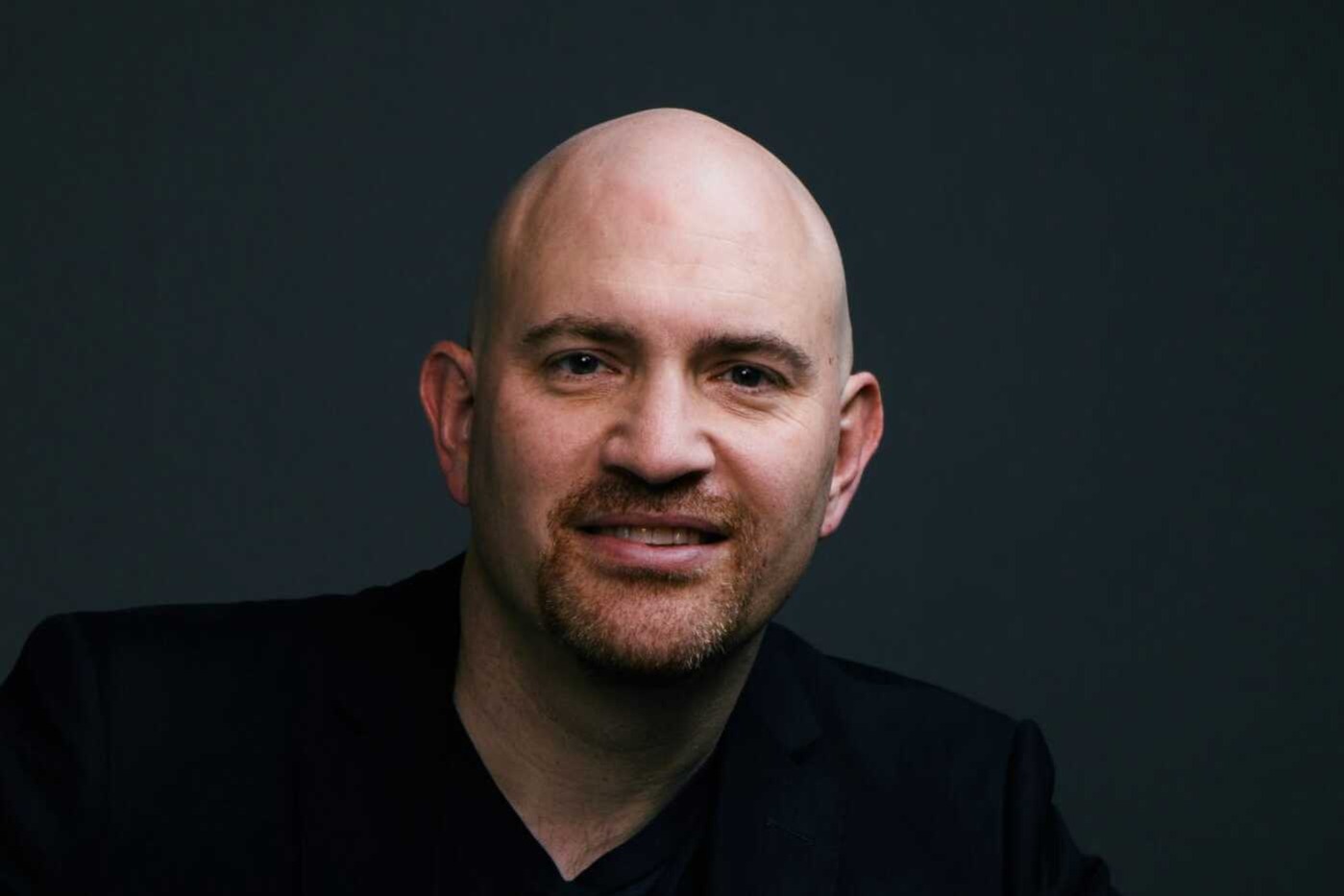
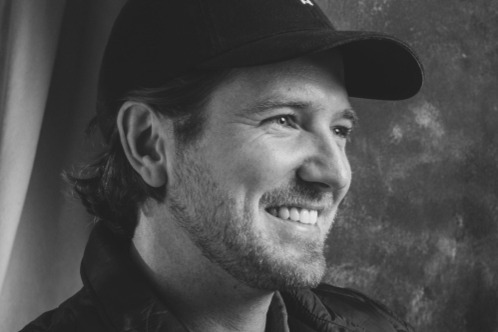




%20(1).jpg)

.jpg)
.png)
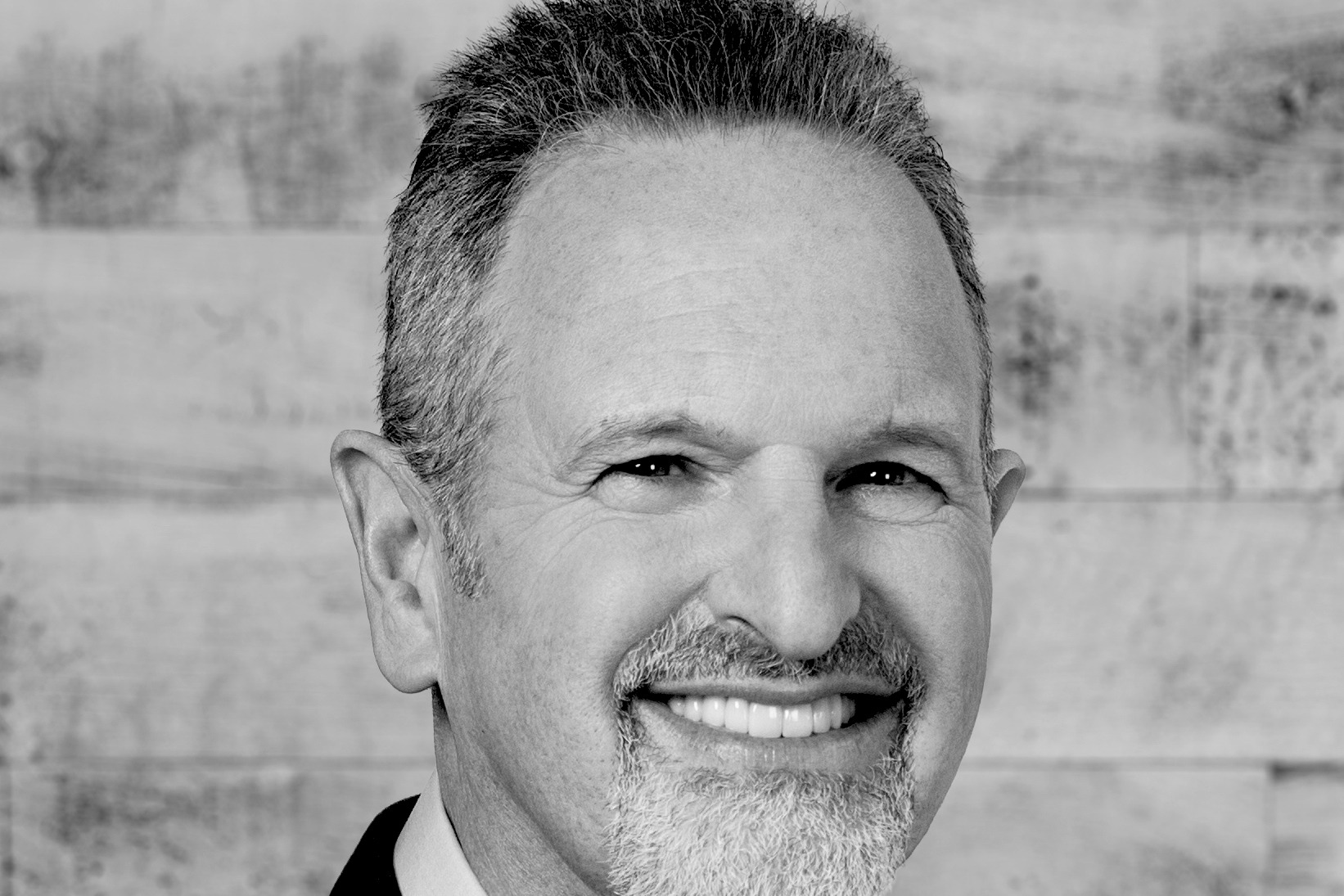
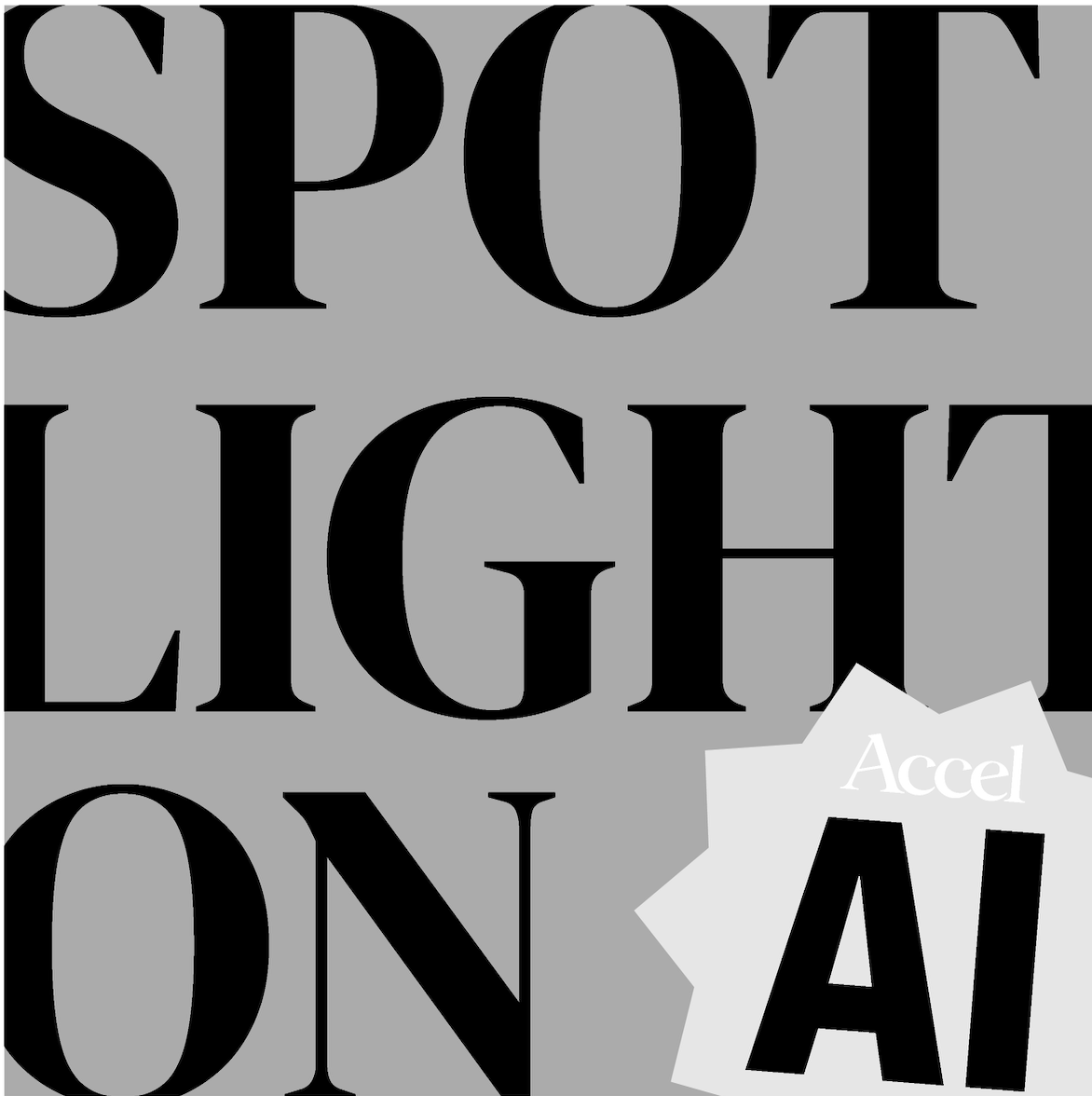





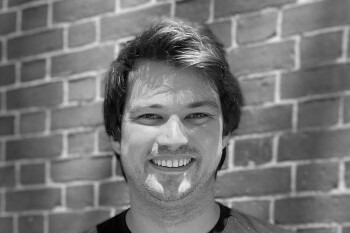

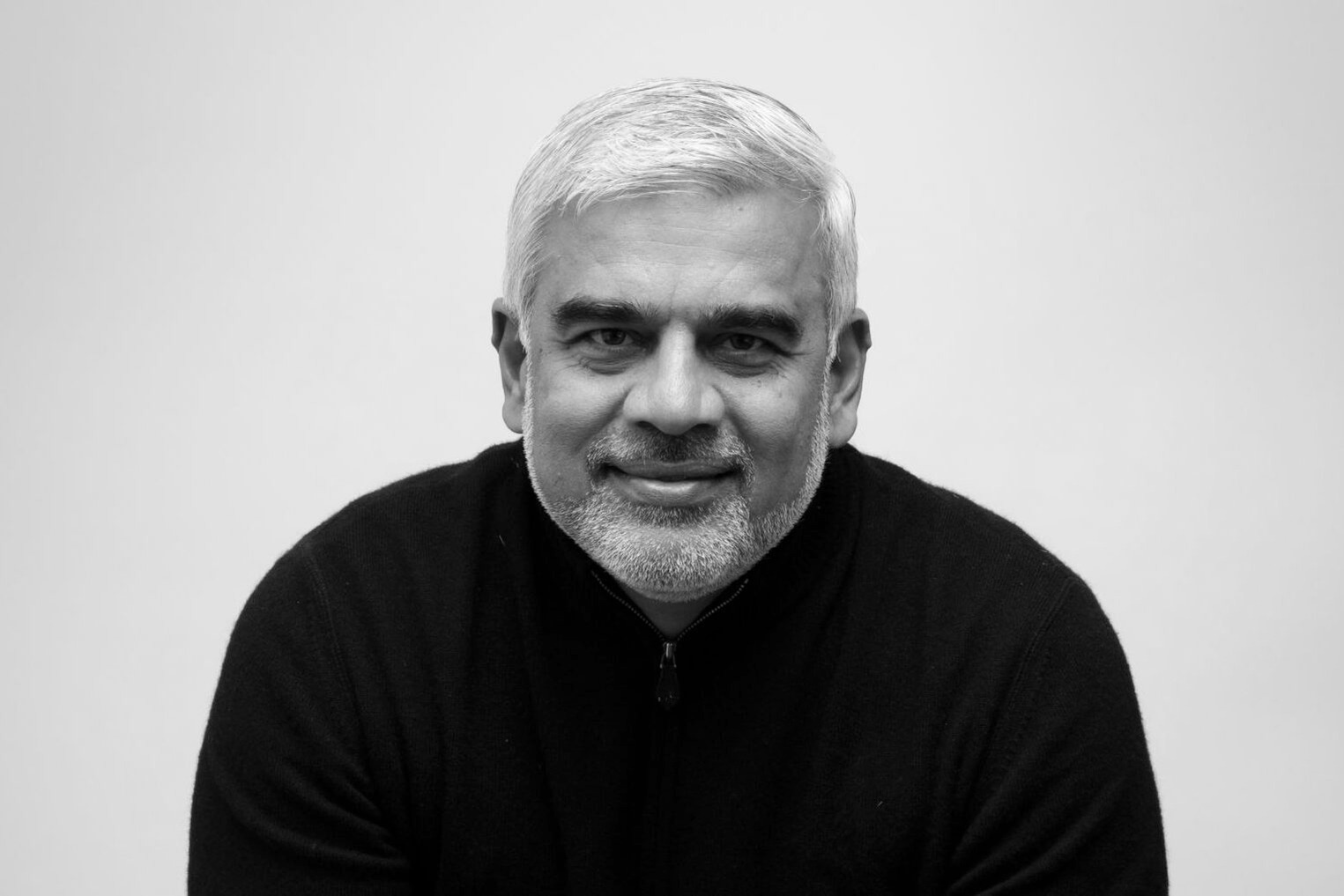
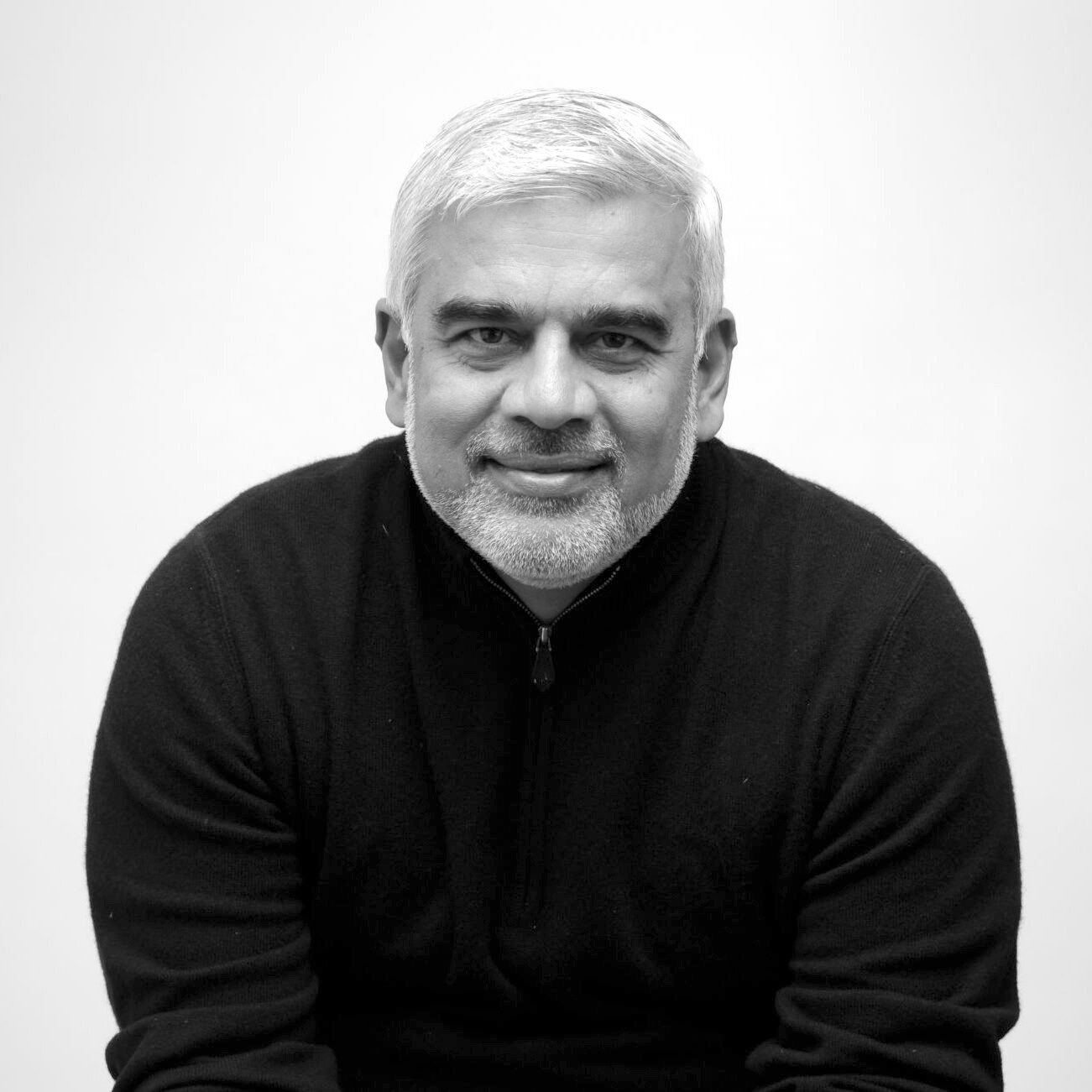




.jpeg)







